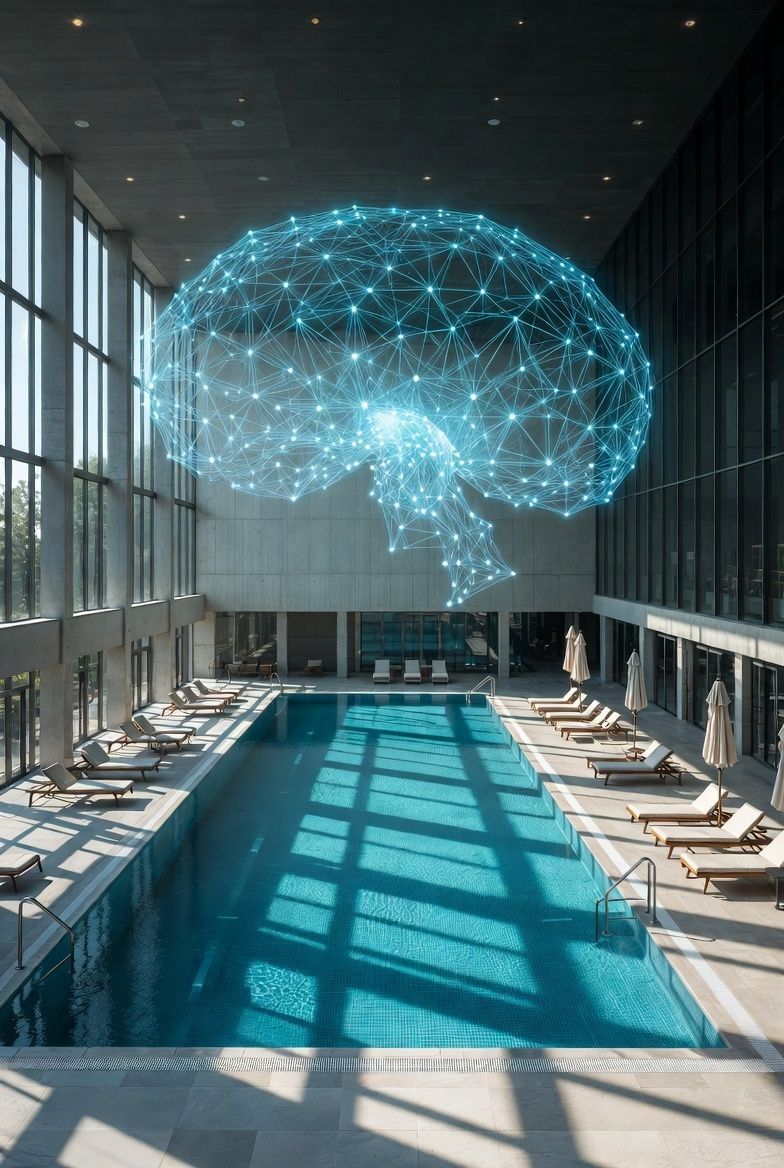Towing AI SEO Marketing Agency - Rev Up Your Tow Online and AI Rankings & Sales
AI-Powered SEO & Marketing Services for Towing Companies in Florida
Table of Contents
1. Introduction: Florida’s Towing Industry & Rising Competition
2. Why Towing Businesses Need SEO, GEO & AEO
3. SEO for Florida Towing & Roadside Assistance Companies
4. GEO (Generative Engine Optimization) for Tow Companies
5. AEO (Answer Engine Optimization): Capturing AI & Voice Search Leads
6. Florida City-Specific Towing Marketing Strategies
• Orlando
• Miami
• Tampa
• Jacksonville
• Naples & Fort Myers
• West Palm Beach & Boca Raton
• Pensacola & Panhandle
• Lakeland, Winter Haven & Central Florida
7. High-Intent Services: Emergency, Roadside, and Heavy-Duty Towing
8. AI-Powered Content Creation for Towing Businesses
9. Local SEO: Maps, Citations, and “Tow Truck Near Me” Visibility
10. AI Bots for Tow Companies and Dispatching
11. Building Trust with EEAT Principles in Towing
12. Case Studies: Florida Towing Success Stories
13. Why Work with NinjaAI
14. Call to Action
15. FAQ
1. Introduction: Florida’s Towing Industry & Rising Competition
Florida drivers are on the road constantly. Between I-4 in Orlando, I-95 in Miami, I-75 in Naples, and rural highways across the Panhandle, breakdowns and accidents happen every day. That’s why towing and roadside assistance is one of Florida’s most competitive service industries.
But here’s the challenge: when someone’s car dies on the side of the road, they don’t remember a billboard. They grab their phone and search immediately. Queries look like:
• “Tow truck near me”
• “24-hour towing Miami”
• “Emergency roadside assistance Tampa”
• “Heavy-duty wrecker Orlando”
If your company doesn’t appear in that exact moment of need, you lose the call. NinjaAI helps Florida towing companies own digital visibility, so your trucks are the ones drivers call when they’re stranded.
2. Why Towing Businesses Need SEO, GEO & AEO
The towing market is built on speed and visibility. You don’t get second chances.
• SEO makes sure you rank in Google for high-intent searches like “towing Orlando” or “cheap tow truck Miami.”
• GEO ensures AI-driven platforms like ChatGPT and Gemini recommend your business when someone asks, “Who provides 24/7 towing near Tampa?”
• AEO gets you chosen as the default voice search result when a driver tells Siri, “Find a tow truck near me.”
The first company that shows up often gets the job. That’s why SEO + GEO + AEO is mission-critical for towing businesses.
3. SEO for Florida Towing & Roadside Assistance Companies
Our SEO campaigns target:
• Location + service: “Orlando towing,” “Miami wrecker service,” “Tampa roadside assistance.”
• Emergency intent: “24-hour tow truck near me,” “flatbed towing Jacksonville,” “emergency towing Naples.”
• Specialty towing: “heavy-duty tow truck Orlando,” “motorcycle towing Miami,” “RV towing Fort Myers.”
• Roadside services: “jump start Tampa,” “tire change Pensacola,” “car lockout Lakeland.”
We build dedicated landing pages for every service and city, ensuring your business dominates all the ways customers search.
4. GEO (Generative Engine Optimization) for Tow Companies
More customers are asking AI platforms directly:
• “Who provides the cheapest tow in Miami Beach?”
• “Best towing company in Orlando open now.”
• “Who can tow a semi in Jacksonville?”
If your business isn’t in AI datasets, you’re invisible. NinjaAI makes your towing company AI-ready by:
• Embedding structured data and service-specific schema.
• Creating conversational Q&A content AI engines can pull.
• Building AI-optimized FAQs for towing and roadside assistance.
5. AEO (Answer Engine Optimization): Capturing AI & Voice Search Leads
Drivers often use voice assistants when stranded:
• “Siri, I need a tow truck near me.”
• “Alexa, call roadside assistance in Naples.”
NinjaAI ensures your company becomes the first and only recommendation in these scenarios. With AEO strategies, we format your site for direct-answer content so Google, Siri, and ChatGPT surface your business first.
6. Florida City-Specific Towing Marketing Strategies
Orlando
Tourist-heavy, high breakdown demand near Disney, Universal, and I-4. SEO targets “24-hour towing Orlando,” “flatbed tow Disney area,” and “roadside assistance Lake Nona.”
Miami
Luxury cars + high traffic = strong demand for specialty and exotic towing. Keywords: “exotic car towing Miami,” “emergency tow Miami Beach.”
Tampa
Cruise port + commuters drive need for emergency roadside services and wrecker towing. Targeting “jump start Tampa” and “24/7 towing near Port Tampa.”
Jacksonville
As Florida’s trucking hub, heavy-duty and semi towing is huge. Campaigns optimize for “semi towing Jacksonville” and “fleet roadside assistance JAX.”
Naples & Fort Myers
Snowbirds and retirees need reliable local tow and roadside services. Trust-building EEAT campaigns dominate here.
West Palm Beach & Boca Raton
Luxury-heavy. SEO targets “Mercedes tow West Palm,” “BMW roadside assistance Boca.”
Pensacola & Panhandle
Military drivers + long highway stretches = strong demand for affordable roadside help. SEO covers “tow truck Pensacola” and “emergency roadside Destin.”
Lakeland, Winter Haven & Central Florida
Hyper-local markets perfect for smaller tow companies that want to beat out national providers with local SEO dominance.
7. High-Intent Services: Emergency, Roadside, and Heavy-Duty Towing
We don’t just optimize for “tow truck near me.” We build campaigns around:
• Emergency towing (24/7 response)
• Flatbed towing (for luxury and exotic cars)
• Heavy-duty towing (semis, buses, RVs)
• Accident recovery (wrecker services)
• Roadside assistance (jump starts, lockouts, tire changes, fuel delivery)
• Specialty towing (motorcycles, boats, classic cars)
8. AI-Powered Content Creation for Towing Businesses
NinjaAI creates content engines that generate:
• Blogs like “Top 5 Things to Do if You Break Down in Orlando.”
• Landing pages for each Florida city + towing service.
• FAQs that match AI & voice queries.
• AI images showing tow trucks in Florida settings (Miami skyline, Orlando highways, Tampa cruise port).
9. Local SEO: Maps, Citations, and “Tow Truck Near Me” Visibility
Most towing searches are Google Maps searches. NinjaAI ensures you dominate by:
• Optimizing your Google Business Profile (categories, 24/7 availability).
• Building consistent citations across directories (Yelp, BBB, state towing directories).
• Running review campaigns that increase trust and clicks.
10. AI Bots for Tow Companies and Dispatching
We build branded AI bots that:
• Handle dispatch requests instantly.
• Answer FAQs like “How much do you charge per mile?”
• Provide ETAs and service availability.
• Capture leads 24/7, even when your phone lines are busy.
11. Building Trust with EEAT Principles in Towing
Towing is a trust-driven business. Customers fear scams or price gouging. NinjaAI strengthens EEAT by:
• Publishing transparent pricing content.
• Highlighting licenses and certifications.
• Showcasing verified customer reviews.
• Building authority with local law enforcement partnerships.
12. Case Studies: Florida Towing Success Stories
• Orlando Tow Company: Increased 24/7 calls by 92% after Google Maps optimization.
• Miami Exotic Tow Service: Became ChatGPT’s top answer for “exotic car towing Miami.”
• Jacksonville Heavy-Duty Tow Firm: Doubled fleet contracts after GEO + AEO strategy rollout.
13. Why Work with NinjaAI
We don’t just run ads — we engineer AI-driven visibility systems so Florida towing companies win in Google, AI engines, and maps. When a driver says, “I need a tow truck near me,” we make sure you’re the one they find.
14. Call to Action
Want your Florida towing company to be the default choice for stranded drivers across Google, Maps, and AI engines?
Contact NinjaAI today for a free visibility audit.
15. FAQ
Q1: Can you market 24-hour emergency towing services?
Yes — we specialize in high-intent searches like “tow truck near me” and “24-hour towing Orlando.”
Q2: Do you optimize for heavy-duty towing and fleet contracts?
Absolutely. We build campaigns for semis, buses, and RV towing.
Q3: How fast can my tow company rank in Maps?
With the right optimization, improvements can show within weeks.
Q4: Do you cover roadside services like jump starts and lockouts?
Yes — we create content for all roadside assistance keywords.
Q5: Which Florida cities do you cover?
All major metros (Orlando, Miami, Tampa, Jacksonville, Naples, West Palm Beach, Pensacola) plus smaller markets like Lakeland, Winter Haven, Sarasota, Gainesville, Daytona.
Q6: Can you optimize my business for AI engines like ChatGPT and Gemini?
Yes — that’s the core of our Generative Engine Optimization (GEO) service.
--
Florida’s towing industry is busier than ever. With millions of drivers on highways like I-4, I-75, and I-95, breakdowns, accidents, and roadside emergencies happen every day. That means towing companies across Orlando, Miami, Tampa, Jacksonville, and smaller towns like Lakeland or Winter Haven are in constant competition for one thing: being found first. When a driver is stranded, they don’t scroll through endless options. They type or say “tow truck near me” and call the first reliable company that pops up. NinjaAI helps Florida towing companies win those searches and dominate visibility by combining SEO, GEO, and AEO strategies with AI-powered content and marketing tools.
Traditional advertising is no longer enough. Billboards, radio spots, or print ads might remind someone of your name, but they don’t matter when a car won’t start in the middle of traffic. That’s why SEO, GEO, and AEO are essential. Search engine optimization ensures your company appears at the top of Google searches for high-intent queries like “emergency towing Tampa” or “flatbed towing Orlando.” Generative Engine Optimization makes sure AI platforms like ChatGPT and Gemini recommend your business when users ask them directly. Answer Engine Optimization puts your company into voice search results, so Siri or Alexa deliver your phone number before anyone else’s. For towing businesses, these strategies aren’t optional—they’re the new lifeline.
SEO for towing companies in Florida starts with keyword precision. People don’t search for towing casually—they search when they need help immediately. That urgency makes the keywords highly specific and highly valuable. NinjaAI builds city- and service-based landing pages for queries like “24-hour towing Miami,” “roadside assistance Jacksonville,” or “flatbed tow truck Orlando.” We also capture niche services such as “motorcycle towing Naples” or “semi truck towing in Jacksonville.” Each page is optimized for mobile, includes call-to-action buttons like “Call Now,” and is designed to appear in Google’s map packs, where most calls are won.
But Google is only part of the picture. More and more, customers are asking AI platforms for answers instead of scrolling search results. Generative Engine Optimization ensures that when someone asks, “Who’s the best tow truck company near Disney Springs?” or “Which Miami tow company handles exotic cars?” the AI engine includes your business in its answer. NinjaAI does this by embedding structured data, creating conversational Q&A content, and publishing AI-optimized FAQs. The result is that your business name appears directly in AI answers, which are rapidly becoming the new first point of contact.
Voice search is another battleground. Drivers stuck on the side of the road often use Siri or Google Assistant to call for help hands-free. That makes Answer Engine Optimization vital. By formatting your content for direct-answer responses and targeting voice-friendly queries, NinjaAI helps towing companies become the single recommended option when a driver says, “Find me a tow truck near me.” Being that first answer means your phone rings while your competitors’ don’t.
Florida’s geography makes city-specific strategies essential. In Orlando, tourism and heavy traffic around I-4 and theme parks create constant demand for towing and roadside assistance. Campaigns here focus on terms like “tow truck near Disney” and “Lake Nona roadside assistance.” Miami requires a different approach, with luxury cars and high-traffic accidents driving searches for “exotic car towing Miami Beach” or “emergency towing Brickell.” Tampa’s port and commuter base create demand for jump starts, accident recovery, and cruise terminal towing. Jacksonville, as a trucking hub, needs optimization for heavy-duty towing and fleet roadside services. Naples and Fort Myers serve retirees and seasonal residents, where trust and transparency dominate. West Palm Beach and Boca Raton require targeting high-end customers with queries like “Mercedes towing West Palm” or “BMW roadside Boca.” In the Panhandle, Pensacola and Destin campaigns focus on affordable roadside help for military families and highway travelers. Central Florida cities like Lakeland and Winter Haven benefit from hyper-local campaigns that allow smaller towing companies to out-rank national competitors by focusing on local maps, citations, and reviews.
It’s not just about location; it’s about service intent. NinjaAI structures campaigns to cover every towing scenario a Florida driver might search for. Emergency towing, flatbed towing for luxury or damaged vehicles, heavy-duty towing for semis and buses, accident recovery, lockout services, jump starts, tire changes, and fuel delivery—all require unique optimization. By creating content for each high-intent service, towing companies capture a wider net of calls and ensure they don’t miss opportunities when customers use specific queries.
AI-powered content creation is at the heart of our approach. Towing companies often lack the time or resources to maintain blogs or service guides, but content is what keeps websites ranking and feeding AI engines. NinjaAI generates blogs like “Five Things to Do While Waiting for a Tow Truck in Orlando” or “How Florida Heat Affects Car Batteries.” We design FAQs that match real customer queries, and we create city-specific landing pages optimized for both Google and AI search. We even generate branded images of tow trucks set against recognizable Florida backdrops—Orlando highways, Miami skylines, or Tampa port terminals—giving your business local relevance.
Local SEO is another critical piece. Most towing searches happen through Google Maps. NinjaAI ensures your Google Business Profile is fully optimized with accurate categories, photos, reviews, and 24/7 service indicators. We also build consistent citations across local directories, from Yelp to state towing directories. To strengthen rankings and trust, we implement automated review campaigns that request feedback after each job, funnel happy customers to public platforms, and capture negative experiences internally. This process steadily builds stronger star ratings, which directly influence both search rankings and customer trust.
AI bots are the next level of towing company marketing and operations. NinjaAI builds branded bots that handle customer inquiries on your website 24/7. These bots can answer pricing questions, log dispatch requests, provide ETAs, and capture leads even when your phone lines are busy. For a business where every call is urgent, these bots prevent lost opportunities and streamline communication with stranded customers.
Trust is everything in the towing business. Customers fear overcharging or being stranded by unreliable providers. That’s why NinjaAI emphasizes EEAT—Expertise, Experience, Authoritativeness, and Trustworthiness—in all towing marketing. We publish transparent pricing guides, highlight licenses and certifications, showcase customer reviews, and build authority by referencing local partnerships with law enforcement or roadside assistance programs. This trust not only reassures customers but also boosts visibility in Google and AI engines, which favor businesses that demonstrate EEAT signals.
The results speak for themselves. In Orlando, a towing company we optimized saw a 92 percent increase in 24/7 calls after map pack improvements. In Miami, an exotic towing service became the top answer on ChatGPT for “exotic car towing Miami,” driving a steady stream of high-value calls. In Jacksonville, a heavy-duty towing firm doubled its fleet contracts after implementing GEO and AEO strategies. These success stories prove that AI-powered SEO and marketing work when tailored to Florida’s towing industry.
NinjaAI doesn’t just run ads or build websites. We engineer complete visibility systems that ensure your towing company is present in every channel where customers search. Whether it’s Google, ChatGPT, Siri, or local maps, we position your company as the default choice. That means more calls, more revenue, and more growth.
If you own a towing company in Florida, the opportunity is clear. The industry is competitive, but most competitors are still stuck in old marketing tactics. The future belongs to those who embrace AI-powered SEO, GEO, and AEO. Contact NinjaAI today for a free visibility audit and learn how we can put your business ahead of the competition, from Miami to Pensacola and everywhere in between.

Enterprise Expertise for Main Street: Why Small Businesses Deserve Better Than Scaled-Down Solutions



Contact Info:
Contact Us
We will get back to you as soon as possible.
Please try again later.


















